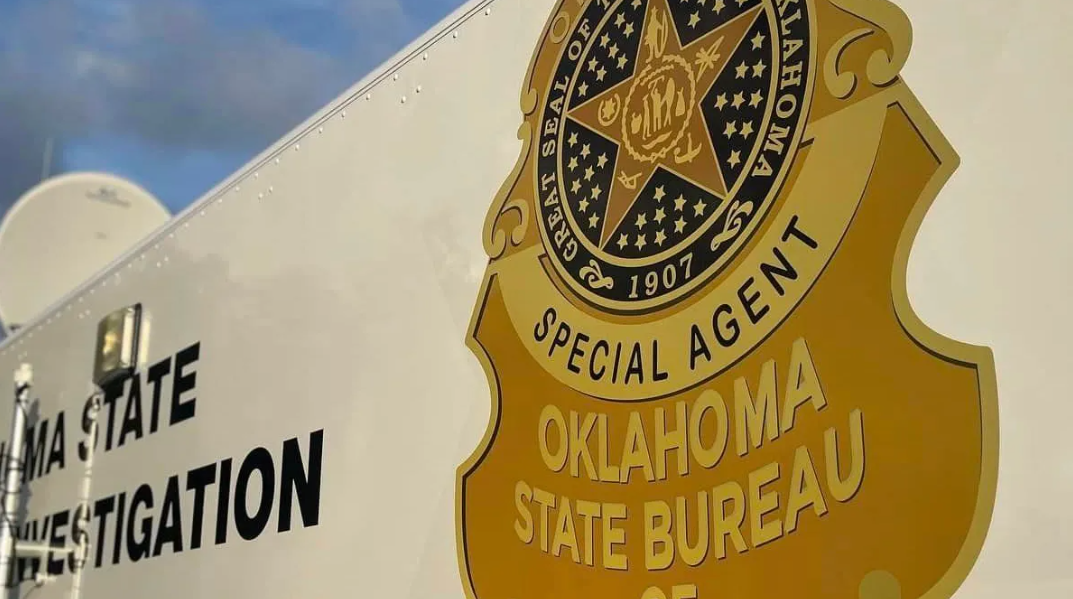In the early 1920’s gangs of outlaws roamed the state robbing and burglarizing banks and terrorizing the citizens of many Oklahoma towns. These gangsters often escaped lawmen by fleeing across county lines. The U.S. Marshal’s Service was the only law enforcement agency with statewide jurisdiction, but its officers were outnumbered by the bandits.
In 1925, Governor M.E. Trapp, in his State of the State Address recommended the creation of an agency of special investigators or state police to combat the outlaws. Thus the legislature appropriated $78,000 to establish the Bureau of Criminal Identification and Investigation, now known as the Oklahoma State Bureau of Investigation.
A year after its creation, the Bureau’s three agents or operatives were credited with reducing the number of bank robberies in the state by roughly 75 percent. Agents accomplished this by developing leads and using informants which were considered by many to be innovative investigative techniques at the time.
In 1939, the Bureau was taken out from under the direction of the Adjutant General’s Office and became a division of the Department of Public Safety. It was during these years that the agency became known as the State Crime Bureau. This arrangement lasted until 1957, when the Bureau was placed under the direct control of the Governor’s Office and again renamed the Oklahoma State Bureau of Investigation.
Beginning in 1957, the OSBI began to emerge as the professional law enforcement agency it is today. Employees were placed under the merit system and for the first time, working for the agency was seen as a career opportunity rather than temporary employment.
In the wake of a controversial investigation of Governor David Hall by the Bureau, the agency was removed from the control of the Governor’s Office. In1976, a seven member independent commission was created to oversee the activities of the OSBI. The makeup of the Commission includes: one police chief, one sheriff, one district attorney and four lay members. These members are appointed by the Governor and approved by the Oklahoma Senate to serve seven year staggered terms. In general, the OSBI Commission appoints the Director, hears complaints, establishes guidelines and serves as a buffer between the Bureau and potential political pressures concerning any particular investigations.
There are only seven agencies or entities that can request the OSBI to conduct an investigation. They include: Police Chiefs, Sheriffs, District Attorneys, the Attorney Generals , the Governor, Council on Judicial Complaints and any legislative committee with subpoena power. The OSBI has original jurisdiction in three areas: auto theft, oil field theft, and threats against public officials.
Today, the primary duty of the OSBI Investigative Division is to assist local law enforcement agencies in solving crimes. OSBI agents offer a number of services including collecting and preserving evidence at crime scenes, participating in undercover investigations to obtain information and evidence, interviewing witnesses and apprehending criminals. Agents investigate many types of crime, including but not limited to: insurance fraud, political corruption, oil field theft, auto theft, homicide, official misconduct, rape, and other white collar crimes. The Bureau has agents who are pilots, polygraph experts, forensic computer experts, and others with special skills which provide many avenues to solve and prevent crime.
Specially trained Crime Scene Agents are located statewide, ready at all times to collect and preserve evidence from crime scenes. The OSBI Investigative Division is home to the Crime Analysis Unit which provides investigative support to the division, as well as home to the Oklahoma State Clearinghouse for the National Center for Missing and Exploited Children. In addition to the headquarters office in Oklahoma City, the OSBI maintains five regional offices throughout the state. The Bureau has placed these offices in Woodward, Tulsa, McAlester, Antlers and Lawton to allow Bureau personnel a faster response time to requests from local law enforcement. In addition to these regional offices, the Bureau has Resident Agents strategically located around the state.











